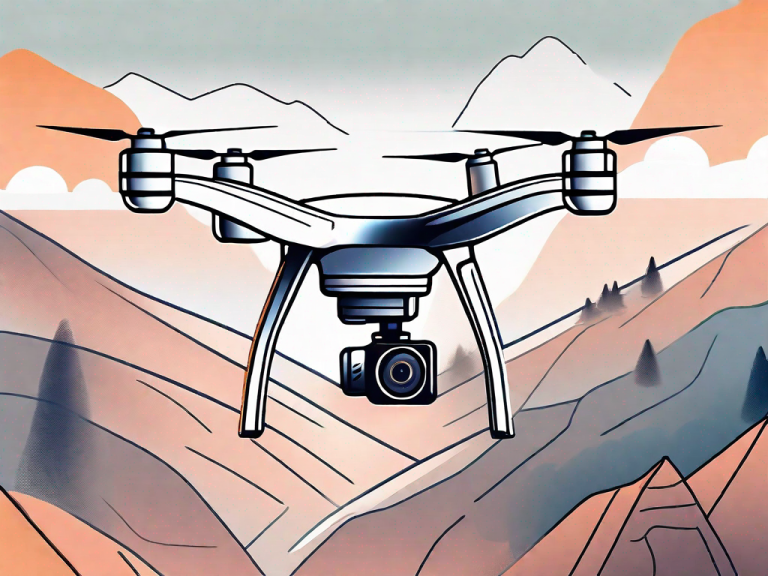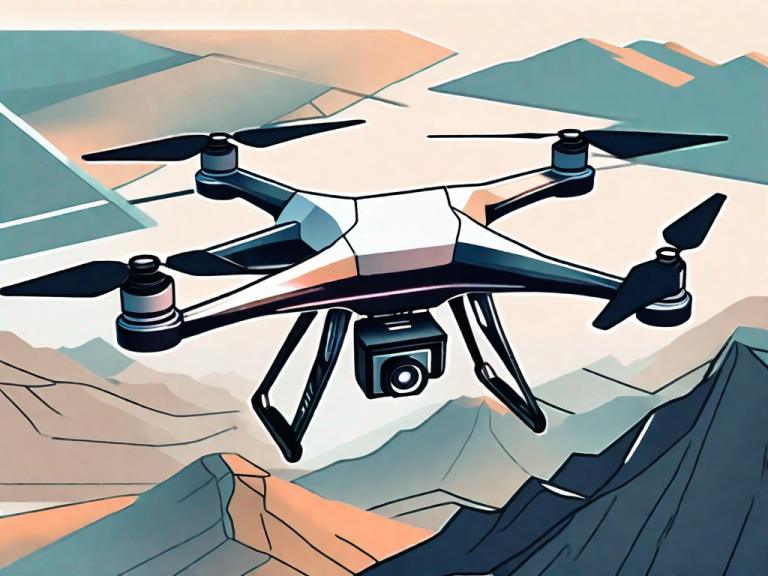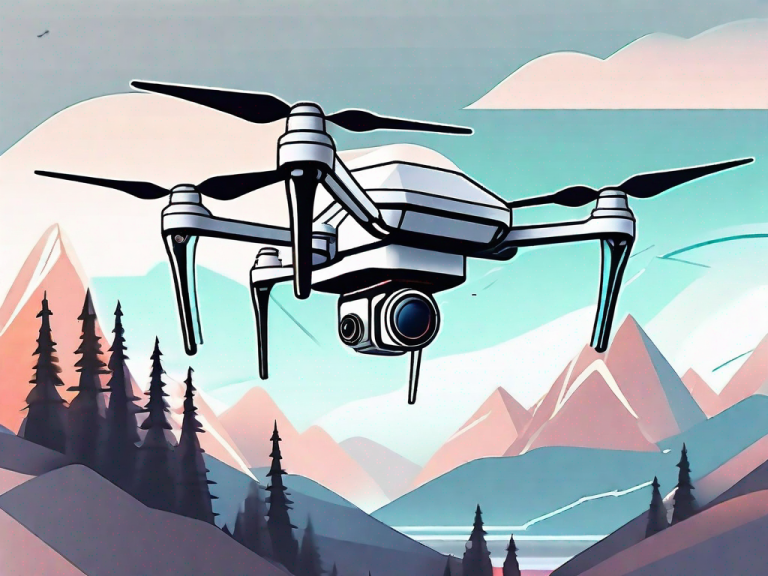If you’re a photography or videography enthusiast who owns a Sony A6400 camera, using a gimbal can greatly enhance your shooting experience. A gimbal is a handheld stabilizer device that helps eliminate shaky footage and allows you to capture smooth and professional-looking videos. In this article, we will explore the best gimbal options specifically designed for the Sony A6400, discuss the benefits of using a gimbal with this camera, and provide detailed insights on various aspects of gimbals for the A6400.
Why Use a Gimbal with the Sony A6400?
Using a gimbal with the Sony A6400 offers multiple advantages. Firstly, it helps stabilize your footage by counteracting any unwanted movements caused by hand tremors or abrupt camera motions. This is particularly important when shooting handheld or during fast-paced action sequences. Secondly, a gimbal allows you to achieve cinematic smoothness in your videos, as if you were using a professional camera rig that costs thousands of dollars. This can greatly enhance the overall quality and aesthetic appeal of your footage. Additionally, gimbals provide easy maneuverability, allowing you to tilt, pan, and roll the camera smoothly without any jerky motions.
Furthermore, using a gimbal with the Sony A6400 can also improve your ability to capture dynamic shots. With the help of a gimbal, you can easily follow subjects in motion, such as tracking a moving car or capturing a person running. This added flexibility allows you to create more engaging and visually captivating content.
Benefits of Using a Gimbal with the Sony A6400
Using a gimbal specifically designed for the Sony A6400 brings several benefits to your videography endeavors. Firstly, it ensures perfect balance and stability for your camera, resulting in steady shots even in challenging shooting environments. Secondly, gimbals offer various intelligent shooting modes such as follow mode, pan mode, and lock mode, which allow for creative and dynamic shots. These shooting modes enable you to add movement and depth to your videos, making them more engaging and captivating for your audience. Furthermore, gimbals for the Sony A6400 often come with additional features such as focus control, zoom control, and time-lapse capabilities, further expanding your creative possibilities.
Additionally, using a gimbal with the Sony A6400 can greatly improve the overall quality of your videos. The gimbal’s stabilization technology helps eliminate shaky footage, resulting in smoother and more professional-looking shots. This is especially beneficial when shooting handheld or in situations where a tripod is not feasible. Moreover, gimbals for the Sony A6400 are designed to be lightweight and portable, making them easy to carry and use on the go. Whether you’re shooting travel vlogs, documentaries, or action-packed videos, a gimbal can greatly enhance the visual appeal and production value of your content.
Factors to Consider When Choosing a Gimbal for the Sony A6400
Selecting the right gimbal for your Sony A6400 requires careful consideration of several factors. Firstly, weight and size is an important consideration, as you want a gimbal that is lightweight and portable, allowing for easy transportation and prolonged shooting sessions without causing fatigue. Secondly, battery life is crucial, as you need a gimbal that can withstand extended shooting sessions without needing frequent recharging. Additionally, look for gimbals that offer multiple stabilization modes and customizable settings to suit your shooting style and needs. Finally, compatibility with other accessories such as external microphones or smartphone attachments could be an important factor depending on your desired use cases.
Another factor to consider when choosing a gimbal for the Sony A6400 is the maximum payload capacity. The payload capacity refers to the maximum weight that the gimbal can support. It is important to ensure that the gimbal you choose can handle the weight of your camera and any additional accessories you may use, such as lenses or external monitors. Exceeding the maximum payload capacity can lead to instability and affect the overall performance of the gimbal. Therefore, it is essential to check the specifications of the gimbal and ensure that it can handle the weight of your equipment.
Top Features to Look for in a Gimbal for the Sony A6400
When searching for the best gimbal for your Sony A6400, there are several key features to look out for. Firstly, ensure that the gimbal has a payload capacity that comfortably supports the weight of your camera along with any additional accessories you plan to use. This will ensure optimal performance and stability during your shoots. Secondly, look for gimbals with advanced stabilization technologies such as 3-axis motorized stabilization, which provides smooth and precise movements in all directions. Additionally, consider gimbals that offer wireless connectivity, allowing you to control the gimbal remotely using a smartphone app. Finally, a gimbal with a comfortable grip and ergonomic design will make it easier to handle and operate for long periods of time.
Another important feature to consider when choosing a gimbal for the Sony A6400 is battery life. Look for gimbals that have a long-lasting battery, as this will allow you to shoot for extended periods without worrying about running out of power. Some gimbals also offer the ability to charge your camera or other devices through a USB port, which can be a convenient feature when shooting on location. Additionally, it is worth considering gimbals that have customizable settings and modes, such as time-lapse or follow mode, to enhance your creative possibilities. By having these additional features, you can further enhance your shooting experience and capture stunning footage with your Sony A6400.
Comparing Different Gimbals for the Sony A6400
When comparing different gimbals available for the Sony A6400, it’s important to look at various factors such as price, build quality, and additional features. Some popular gimbals for the Sony A6400 include the DJI Ronin-SC, Zhiyun Crane 3S, and FeiyuTech AK2000C. The DJI Ronin-SC is known for its lightweight design and impressive battery life. The Zhiyun Crane 3S offers exceptional stability and a wide range of advanced features. The FeiyuTech AK2000C is praised for its user-friendly interface and excellent performance. Ultimately, the best gimbal for you will depend on your specific needs, budget, and shooting style.
Price is an important factor to consider when comparing gimbals for the Sony A6400. The DJI Ronin-SC is generally more affordable compared to the Zhiyun Crane 3S and FeiyuTech AK2000C. However, it’s worth noting that the price difference may reflect variations in build quality and additional features.
Build quality is another crucial aspect to evaluate. The Zhiyun Crane 3S is known for its robust construction and durability, making it suitable for heavy-duty use. On the other hand, the DJI Ronin-SC and FeiyuTech AK2000C offer a balance between sturdiness and portability, making them ideal for on-the-go shooting.
The Pros and Cons of Various Gimbals Compatible with the Sony A6400
Each gimbal compatible with the Sony A6400 has its own set of advantages and disadvantages. The DJI Ronin-SC, for example, offers excellent stabilization and a user-friendly interface, but it may not be suitable for heavier camera setups. The Zhiyun Crane 3S, on the other hand, provides superior stability and control but is bulkier and more expensive. The FeiyuTech AK2000C is a reliable and cost-effective option, but lacks some advanced features found in other gimbals. Consider your specific needs and shooting requirements when evaluating the pros and cons of different gimbals to make an informed decision.
Another gimbal option compatible with the Sony A6400 is the Moza AirCross 2. This gimbal offers a compact and lightweight design, making it easy to carry and handle during shoots. It also provides excellent stabilization and smooth motion control, allowing for professional-looking footage. However, the Moza AirCross 2 may have limited payload capacity compared to other gimbals, which means it may not be suitable for heavier camera setups. Additionally, it may not have as many advanced features as some of the other gimbals mentioned. It is important to carefully consider your specific needs and shooting requirements when choosing the right gimbal for your Sony A6400.
How to Properly Balance a Gimbal with the Sony A6400
Properly balancing your gimbal with the Sony A6400 is crucial for achieving optimal stabilization and performance. The process generally involves adjusting the gimbal’s three axes to ensure the camera remains level and centered. Start by mounting the camera securely to the gimbal and then begin adjusting the roll axis, followed by the pitch axis and yaw axis. Make small adjustments and test the balance frequently until your camera remains stable without any drift. Refer to the gimbal’s user manual for specific instructions and tips on proper balancing techniques. Keep in mind that achieving a balanced setup may require some trial and error, so be patient and persistent until you achieve the desired results.
One important factor to consider when balancing a gimbal with the Sony A6400 is the weight distribution of your camera setup. Different lenses, accessories, and even battery grips can affect the balance of the gimbal. It is recommended to remove any unnecessary accessories and ensure that the camera is properly centered on the gimbal’s mounting plate.
Additionally, it is crucial to check the gimbal’s motor strength and adjust it accordingly. If the motors are too weak, the gimbal may struggle to stabilize the camera, resulting in shaky footage. On the other hand, if the motors are too strong, they may strain and drain the gimbal’s battery quickly. Consult the gimbal’s user manual to learn how to adjust the motor strength and find the optimal setting for your camera setup.
Step-by-Step Guide on Setting Up a Gimbal for the Sony A6400
Setting up your gimbal for the Sony A6400 involves a few simple steps that will ensure your camera is securely mounted and properly balanced. Firstly, attach the camera plate or mounting bracket to the gimbal’s base. Then, mount your Sony A6400 onto the plate or bracket, ensuring it is securely fastened. Next, turn on the gimbal and make any necessary adjustments to the balance of the camera using the gimbal’s controls. Take your time to carefully adjust each axis until the camera remains leveled and stable. Once your gimbal is properly set up, you can start shooting smooth and steady footage with your Sony A6400.
Additionally, it is important to calibrate your gimbal before using it with the Sony A6400. Calibration ensures that the gimbal’s sensors are properly aligned and can accurately stabilize the camera. To calibrate your gimbal, follow the manufacturer’s instructions, which usually involve placing the gimbal on a flat surface and allowing it to automatically calibrate itself.
Furthermore, it is recommended to use a lens with image stabilization (IS) when using a gimbal with the Sony A6400. The combination of the gimbal’s stabilization and the lens’s IS will provide even smoother footage and reduce any potential camera shake. Make sure to enable the lens’s IS function before shooting to maximize the stabilization effect.
Tips and Tricks for Getting Smooth Footage with a Gimbal on the Sony A6400
To achieve smooth and professional-looking footage with your gimbal on the Sony A6400, consider implementing the following tips and tricks. Firstly, practice proper grip and handling techniques, ensuring a firm and stable hold on the gimbal. This will minimize any unintended movements or vibrations. Secondly, experiment with different shooting modes and movements, such as panning, tilting, and walking shots, to add diversity and visual interest to your videos. Additionally, utilize the gimbal’s follow modes to track moving subjects smoothly and accurately. Lastly, take advantage of the Sony A6400’s built-in stabilization features, such as optical steady shot or electronic image stabilization, in conjunction with your gimbal for even better results.
Best Budget-friendly Gimbal Options for the Sony A6400
If you’re on a budget but still want to enjoy the benefits of using a gimbal with your Sony A6400, there are several affordable options available. The Hohem iSteady X, for instance, is a compact and lightweight gimbal that offers good stabilization performance at an affordable price. The MOZA Mini-S is another budget-friendly option that provides reliable stabilization and multiple shooting modes. Lastly, the FeiyuTech G6 is praised for its excellent build quality and affordable price point. These gimbals offer a cost-effective solution for Sony A6400 users looking to enhance their videography without breaking the bank.
Advanced Gimbals that Enhance Filming with the Sony A6400
For users looking for more advanced gimbal options to take their filming with the Sony A6400 to the next level, there are a few high-end choices available. The DJI Ronin-S is a popular option that offers exceptional stabilization and advanced shooting modes, making it suitable for professional videographers. The Zhiyun Crane 2S is another advanced gimbal known for its impressive payload capacity and professional-grade features. Finally, the Moza Air 2 is highly regarded for its robust build quality, extended battery life, and versatile shooting modes. These advanced gimbals provide a range of features and capabilities that can greatly enhance your filmmaking experience with the Sony A6400.
User Reviews: Which Gimbal Works Best with the Sony A6400?
User reviews can provide valuable insights into which gimbal works best with the Sony A6400. Many users have found success with the DJI Ronin-SC, praising its lightweight design, ease of use, and reliable performance. Others have had positive experiences with gimbals such as the Zhiyun Crane 3S, FeiyuTech AK2000C, and MOZA AirCross 2. It’s essential to consider multiple user reviews and compare the feedback to determine which gimbal aligns with your specific needs and shooting preferences. Additionally, reach out to fellow Sony A6400 owners in online communities or photography/videography groups to gather more opinions and recommendations.
Best Accessories to Use in Conjunction with a Gimbal for the Sony A6400
Using accessories in conjunction with your gimbal for the Sony A6400 can further enhance your shooting capabilities. Some essential accessories to consider include an external microphone, which can significantly improve the audio quality of your videos. Additionally, a smartphone holder or mount allows you to use your smartphone as a monitor or remote control for your gimbal. An extra battery or power bank is also recommended to ensure uninterrupted shooting sessions. Other useful accessories include lens filters, LED lights, and additional camera stabilization tools like a tripod or monopod. Experimenting with different accessories will help you achieve optimal results and expand your creative possibilities.
Maintaining and Caring for Your Gimbal and Sony A6400 Combo
Proper maintenance and care are vital for keeping your gimbal and Sony A6400 combo in optimal condition. Regularly inspect your gimbal for any signs of damage or wear and tear, such as loose screws or frayed cables. Clean the gimbal and camera body with a soft cloth to remove any dust or debris. Pay special attention to the motorized axes and ensure they remain clean and free from obstruction. When storing the gimbal, remove the camera and securely lock the axes to prevent any accidental movements. It’s also important to update the firmware of your gimbal whenever a new version becomes available, as this can often provide performance improvements and bug fixes. By taking these maintenance steps, you can prolong the lifespan of your gimbal and ensure reliable performance for years to come.
By considering the benefits of using a gimbal with the Sony A6400, understanding the factors to consider when choosing one, and exploring various popular options and their pros and cons, you’ll be well-equipped to make an informed decision about which gimbal is best for your specific needs. Remember to properly balance and set up your gimbal, and experiment with different shooting techniques and accessories to get the most out of your Sony A6400 gimbal combo. With practice and creativity, you’ll be capturing smooth and professional-looking videos that truly showcase the capabilities of your Sony A6400.









